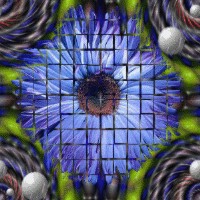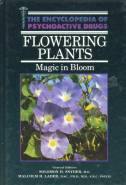


This is a delightful slim volume (of 112 pages) profusely illustrated with photographs and drawings, describing those flowering plants with hallucinogenic properties, and how they are historically reported and used in ritual.
In case your first instinct, gentle browser, is to think this book is just of interest to the potential drug-taking readership, I would beg to differ. On offer are sections and brief snippets about nutmeg, cannabis, mimosa, hallucinogenic tagete (Tagetes lucida) and “the salvia (sage) of the diviners” Salvia divinorum – according to the text the only Sage species with hallucinogenic properties. The although the back cover introducing the series does indicate that an enquiring young readership is expected, which perhaps explains the lavish use of illustrations, the narrative tone does not "talk down" to its' readers.
 Of course the major portion of the book is devoted to hallucinogens in the
cactus family (e.g. true peyote Lophophora
williamsii), the morning glory family (e.g. Turbinata spp.), the Barbados cherry family (the Banisteriopsis
genera), and the Bean and Potato families (the latter including Henbane (Hyoscyamus niger) and Mandrake Mandragora
officinarum. The book is written very much in friendly & highly
informative encyclopeadia style – there is much detailed information without
spilling over into a purely academic account.
Of course the major portion of the book is devoted to hallucinogens in the
cactus family (e.g. true peyote Lophophora
williamsii), the morning glory family (e.g. Turbinata spp.), the Barbados cherry family (the Banisteriopsis
genera), and the Bean and Potato families (the latter including Henbane (Hyoscyamus niger) and Mandrake Mandragora
officinarum. The book is written very much in friendly & highly
informative encyclopeadia style – there is much detailed information without
spilling over into a purely academic account.
It is questionable whether the book would find a place on
everyone’s’ bookshelf (i.e. everyone interested in aromatic plants). However
for those of use avid collectors of snippets of information, there will be some
that will not pass it by.
BACK BACK TO BOOK REVIEWS NEXT
Copyright
© 2001 by Tony Burfield all rights Reserved
